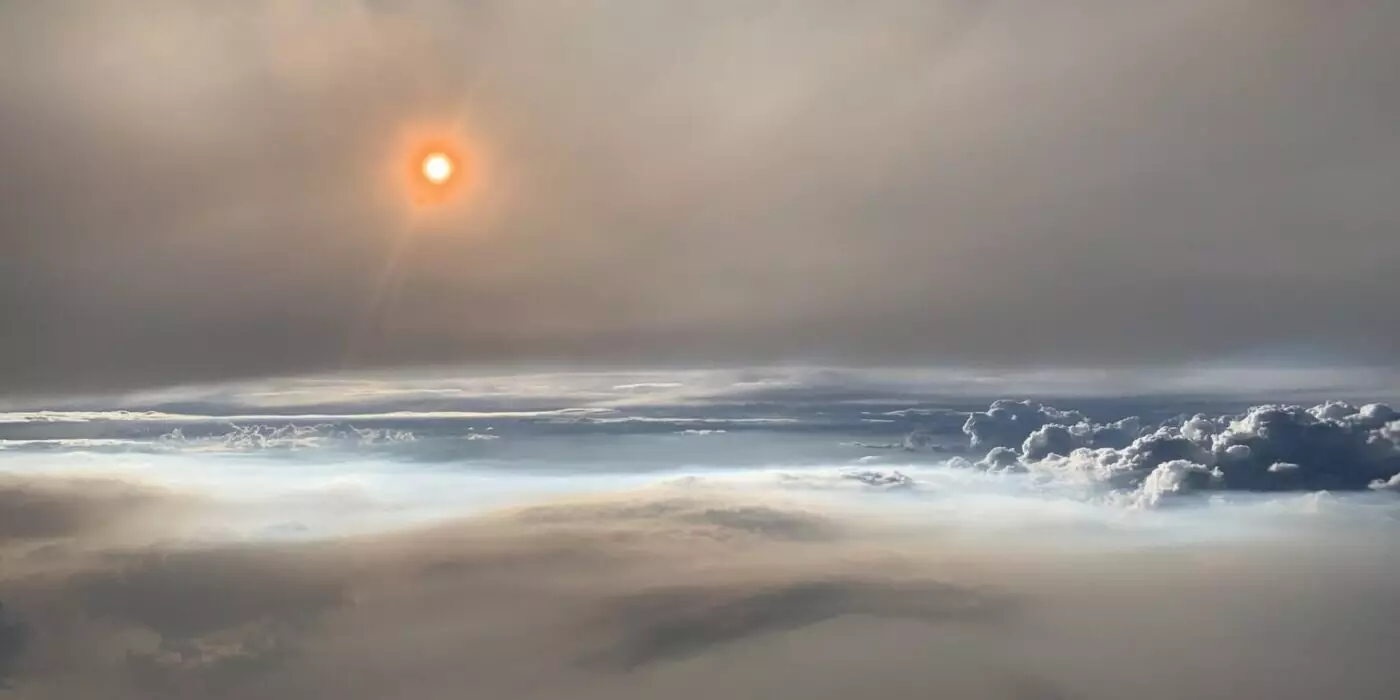As our planet continues to warm, the occurrence of extreme wildfires has surged, creating an alarming intersection between environmental disaster and climate change. At the forefront of these wildfires is black carbon, a potent agent of atmospheric warming that bears both immediate and long-term repercussions for our atmosphere. The role of black carbon in regulating temperature and altering climate dynamics must be critically examined, especially as future wildfires are forecasted to intensify with climate change. This dilemma presents an urgent call for scientists and policymakers alike to grasp the gravity of black carbon emissions and their hidden impacts in the upper atmosphere.
Unraveling the Complexity of Pyrocumulonimbus Clouds
Wildfires don’t just create a trail of destruction; they also produce pyrocumulonimbus (pyroCb) clouds that further complicate our understanding of atmospheric changes. These towering clouds act as conduits for black carbon, ejecting it into the upper troposphere and lower stratosphere, where its effects can linger for extended periods. Recent studies, particularly from the research conducted by Washington University in St. Louis’ Center for Aerosol Science & Engineering, have shed light on how these extreme clouds add layers of complexity to the issue of atmospheric warming.
Rajan Chakrabarty, a key researcher, emphasizes the challenge in quantifying black carbon’s influence in the upper atmosphere. Unlike conventional black carbon particles from smaller fires and urban areas, black carbon from pyroCbs presents unique physical characteristics, particularly in terms of its light absorption capabilities. This distinction amplifies its warming potential, making it a focal point for further study.
Research Findings on Black Carbon Characteristics
The collaborative study, which incorporated rigorous airborne measurements during the NOAA/NASA FIREX-AQ field campaign, made remarkable strides in isolating the absorptive characteristics of black carbon emitted from pyroCbs. The findings revealed that particles from pyroCb clouds absorb twice as much sunlight as their counterparts from smaller or urban fires, thus exerting a significantly stronger warming effect on the atmosphere. Such revelations are critical as they fundamentally change the narrative surrounding wildfire emissions, spotlighting the higher stakes involved with pyroCb emissions.
The research employed advanced measuring techniques and particle-resolved models to analyze the mass and structure of black carbon particles. This detail-oriented analysis not only elevated the understanding of black carbon’s optical properties but also set the groundwork for future climate models that must account for this newfound knowledge. Our understanding of the temperatures and compositions in the stratosphere is evolving, yet it remains poignantly incomplete.
The Global Implications of Black Carbon Emissions
The global repercussions of black carbon from pyroCbs cannot be underestimated. This phenomenon is becoming increasingly recognized as a significant contributor to long-term climate impacts. With pyroCb events in regions like Canada and Australia injecting black carbon into the lower stratosphere, the implications stretch far beyond regional hotspots. Researchers suggest that these emissions have a vast reach, affecting dynamic atmospheric circulation and altering radiative forcing around the globe for months after the events.
Chakrabarty’s insights emphasize that pyroCbs contribute a striking 10-25% of current black carbon levels in the lower stratosphere. It highlights the interconnectedness of these climate phenomena, wherein emissions from one region can reverberate throughout both hemispheres, raising alarms about the cascading effects of black carbon on global climate stability.
The Path Forward: A Call for Urgent Research
As scientists continue to unveil the multifaceted role of black carbon, it’s evident that more direct measurements and refined studies are critical. Existing climate models necessitate enhanced accuracy in forecasting stratospheric warming, with a particular focus on black carbon sourced from pyroCbs. The urgency of the situation compels us to rethink current strategies and invest in advanced research methodologies. Understanding the dynamic behavior of black carbon can unearth insights critical for combating climate change effectively.
In a warming world spiraling towards increased wildfire activity, addressing the ramifications of black carbon emissions should be placed high on the priority list for researchers and policymakers alike. As we adjust our climate models to account for the new scientific findings, it is essential to acknowledge the intricate relationship between wildfires, black carbon, and climate health. With concerted effort and collaboration, we have the potential to form a more comprehensive response to the challenges posed by a warming planet.


Leave a Reply